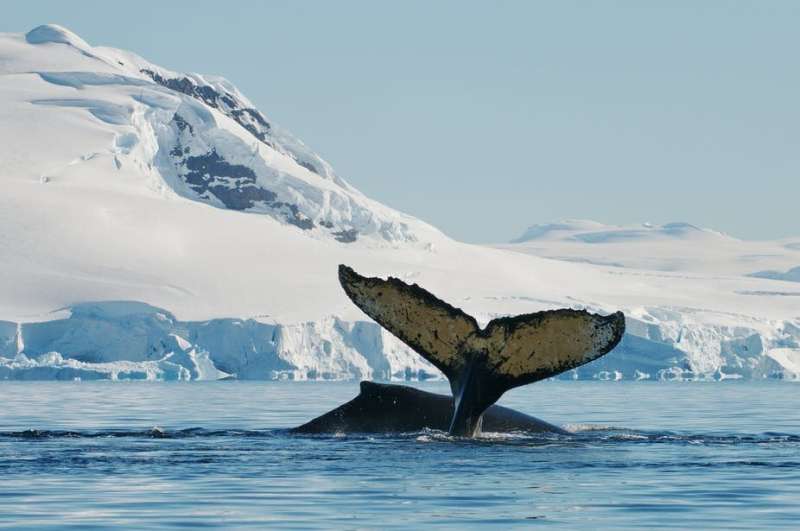Whale and dolphin brains produce lots of heat

We have all heard the mantra that dolphins and whales (cetaceans) are highly intelligent animals. Some claim they're on par with great apes and humans—maybe even smarter. But where does this concept come from?
There are two lines of thought. Firstly, a range of cetacean behaviors are interpreted as displays of notable intelligence. Second, cetaceans have very large brains; several species have brains that weigh more than human brains. We have large brains, and it is the structure and activity within these large brains that determines our abilities to examine, analyze and manipulate the world in a very complex way. So it has been thought that any other animal that has a brain as large, or larger, must be using their brain for the same thing.
But this logic is based on a very specific assumption: that 1 gram of brain tissue has, on average, the same capacity to process information in the same way irrespective of the brain in which it is found. It is this assumption that I have questioned over the past 20 years and I have come to a very different conclusion.
In my most recent study, my colleagues and I have ascertained that the cetacean brain is indeed special. Not for intelligence, though: it is special because it produces a lot more heat than the brains of other mammals. Through our research we've concluded that the cetacean brain has a specialized thermogenic system. It helps the animal's brain to produce enough heat to maintain a functional brain temperature, and we believe this will combat the loss of heat to the water. This is separate to the special way whales and dolphins keep their bodies warm.
Evidence suggests the neurothermogenic specialization we describe evolved around 32 million years ago.
With this knowledge, scientists can better understand how important water temperature is to the survival of cetaceans. This, in turn, will allow us to understand what will happen to certain species of cetaceans during the inevitable rise in oceanic temperatures associated with anthropogenic-induced climate change.
It is quite possible that some species, such as those dependent on the polar ice, like narwhals and beluga whales, may become victims of global warming. This new understanding of cetaceans will allow us to direct our conservation efforts in the most appropriate way to secure the future of as many species of cetacean as possible.
Size and skill
Compared to humans—and indeed many other mammals—cetacean brains have a very small prefrontal cortex (that part involved in our higher mental/executive activities), a tiny hippocampus (responsible for memory formation/retrieval and spatial navigation), and many other features that are very different to other mammals.
This means we can conclude that the structure of the cetacean brain does not endow them with the "hardware" necessary for the production of behaviors that are more complex than those seen in many other animals, unlike humans.
So, if the cetacean brain is not large for intellectual purposes, why is it so big?
Cetacean brains became truly large around 32 million years ago, about 20 million years after they became fully aquatic mammals. At this time, there was a major cooling of global oceanic temperatures. This coincided with the loss of the shallow, warm, nutrient-rich, equatorial Tethys sea. These ancient cetaceans were faced with a quandary: adapt to this new, cold, open ocean environment, or become extinct.
The mammalian brain produces its own heat, independent of the body, to maintain a stable temperature of 37°C. Even a small drop in brain temperature leads to a reduction in neural activity. Cetaceans mostly live in oceanic waters; the mammalian body loses heat via conductive heat transfer to the water 90 times faster than to air at the same temperatures; and mammal brains need to be maintained at 37°C. Given these factors, I proposed that perhaps the environmental pressure of colder water occurring around 32 million years ago was the trigger for the evolution of the larger brain in cetaceans.
Inside the cetacean brain
To provide support to this idea, my colleagues and I examined the heat-producing system within the brains of cetaceans and their close relatives the artiodactyls—such as hippopotamuses, pigs, antelopes, buffaloes and giraffes.
We reasoned that this heat-producing system would have to use the process of non-shivering thermogenesis, a way to produce heat within cells rather than through muscular activity, as there are no muscles surrounding the brain. The most commonly studied part of the body that produces heat through non-shivering thermogenesis is brown fat. Brown fat cells can change their internal metabolic pathways so as to produce heat, warming up the body. This happens when mitochondria (organelles within the cell that produce energy) change their activity so that rather than producing adenosine triphosphate (ATP), for chemical energy in the cell, they produce heat. This is achieved by activating uncoupling proteins (UCPs).
In the cetacean brain we found that almost three times as many neurons contain these proteins compared to their terrestrial relatives. We also found that between 30 and 70% of glial cells contain UCPs in cetaceans, while in artiodactyls the glial cells did not contain UCPs in readily detectable amounts. Glial cells are the housekeepers of the brain: they maintain the right micro-environment to support active neuronal functioning.
We conclude that the cetacean brain has a specialized thermogenic system that emerged around 32 million years ago. This, we believe, will combat the loss of heat to the water—and help cetaceans to maintain a functional brain temperature.
A special brain
So, yes: the cetacean brain is special, as long believed. But this brain isn't used for special intellectual functions and complex thoughts. Instead, it's special because it produces a lot more heat than the brains of other mammals, and this is necessary for their survival in the colder aquatic environment they inhabit.
Provided by The Conversation
This article is republished from The Conversation under a Creative Commons license. Read the original article.![]()



















